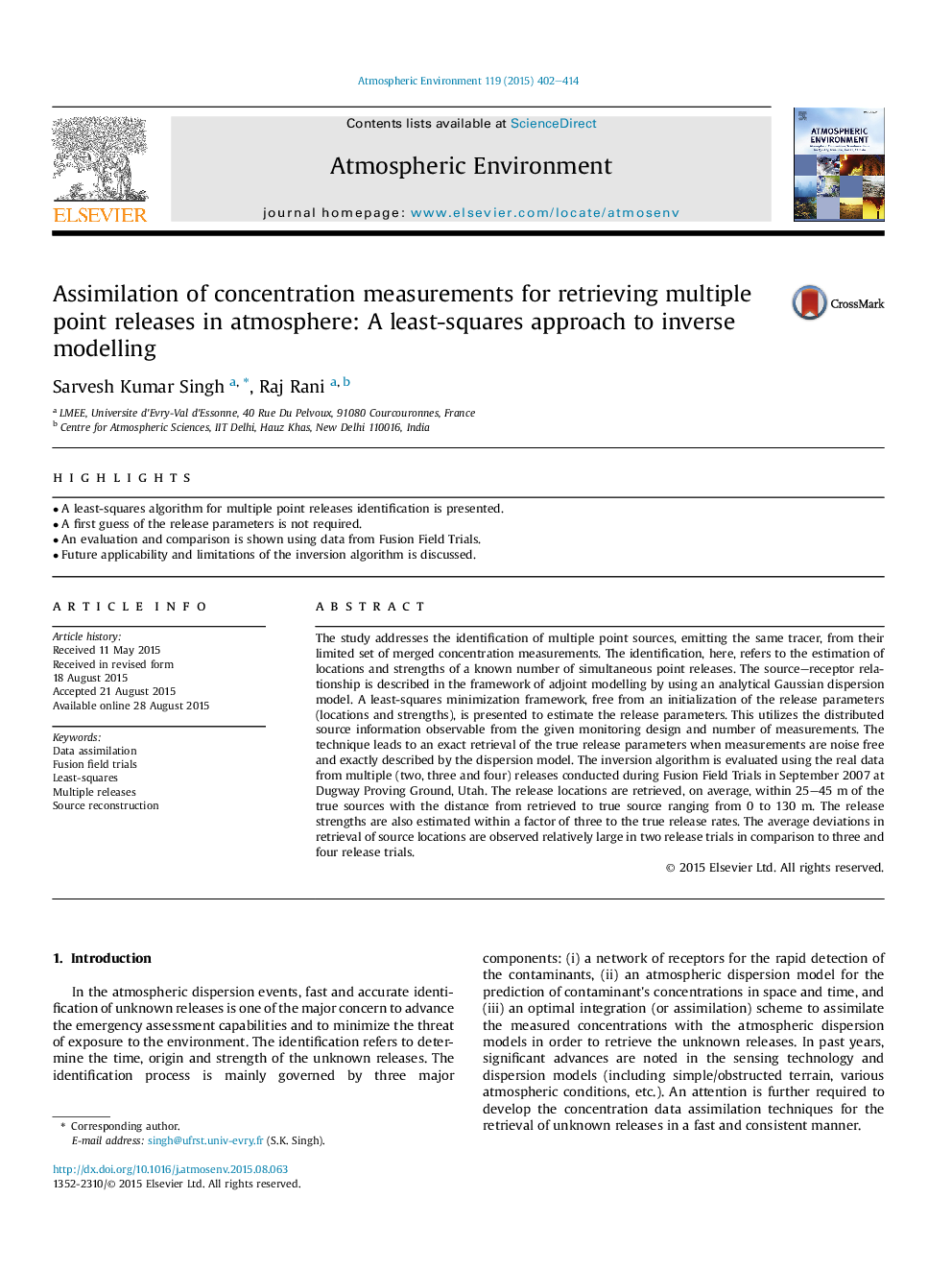| Article ID | Journal | Published Year | Pages | File Type |
|---|---|---|---|---|
| 6337698 | Atmospheric Environment | 2015 | 13 Pages |
â¢A least-squares algorithm for multiple point releases identification is presented.â¢A first guess of the release parameters is not required.â¢An evaluation and comparison is shown using data from Fusion Field Trials.â¢Future applicability and limitations of the inversion algorithm is discussed.
The study addresses the identification of multiple point sources, emitting the same tracer, from their limited set of merged concentration measurements. The identification, here, refers to the estimation of locations and strengths of a known number of simultaneous point releases. The source-receptor relationship is described in the framework of adjoint modelling by using an analytical Gaussian dispersion model. A least-squares minimization framework, free from an initialization of the release parameters (locations and strengths), is presented to estimate the release parameters. This utilizes the distributed source information observable from the given monitoring design and number of measurements. The technique leads to an exact retrieval of the true release parameters when measurements are noise free and exactly described by the dispersion model. The inversion algorithm is evaluated using the real data from multiple (two, three and four) releases conducted during Fusion Field Trials in September 2007 at Dugway Proving Ground, Utah. The release locations are retrieved, on average, within 25-45Â m of the true sources with the distance from retrieved to true source ranging from 0 to 130Â m. The release strengths are also estimated within a factor of three to the true release rates. The average deviations in retrieval of source locations are observed relatively large in two release trials in comparison to three and four release trials.
